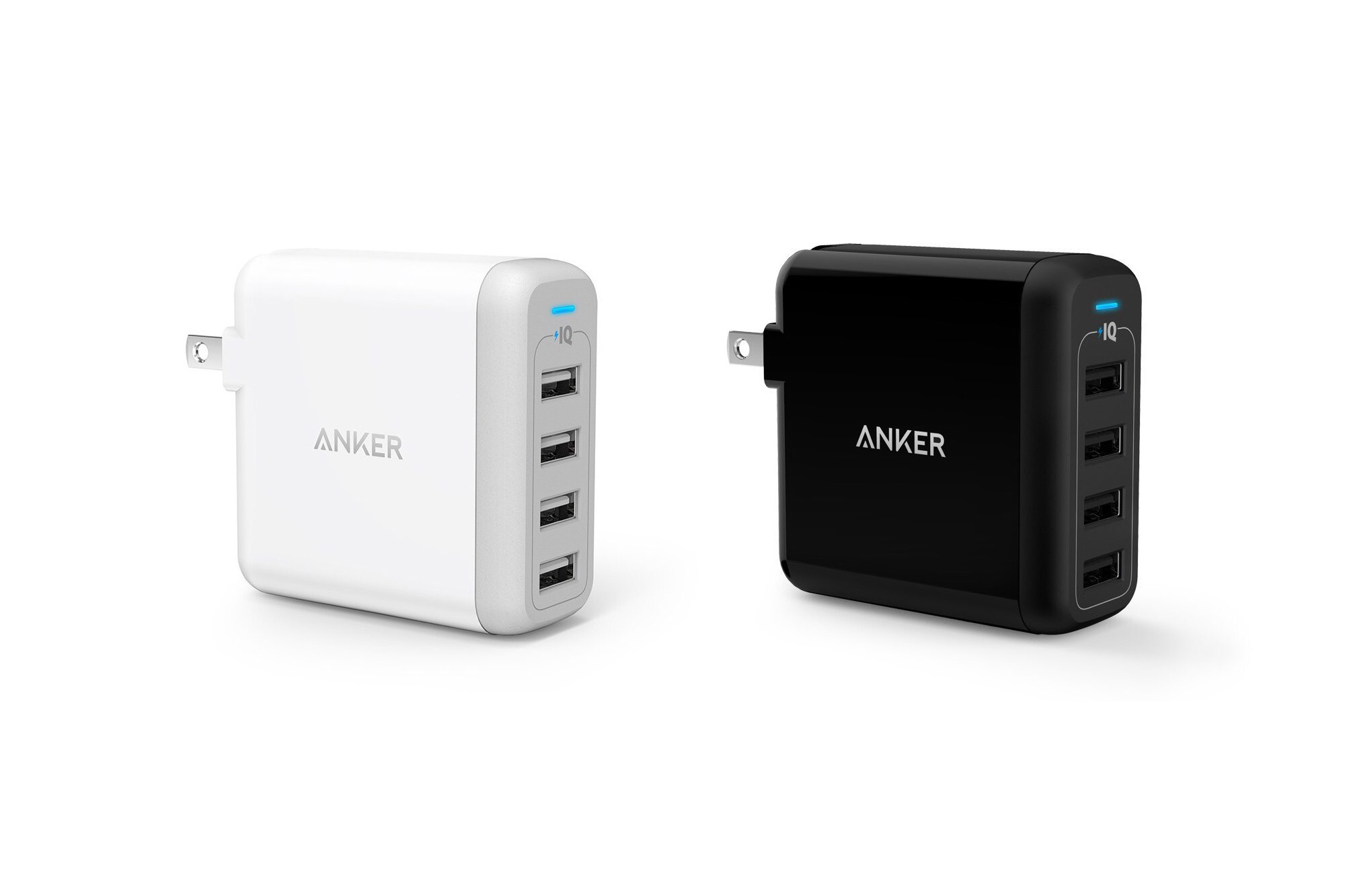We believe that one should generally use the right tool - or tools - for the right job. Over the years, that has led us to develop 2~3 standard “loadouts” for travel depending on the expected mix of mobility required, work expected and general purpose of the trip (leisure versus pleasure). In general, however, one rule more or less holds true - the lighter the gear, the more compromises need to be made.
Components
- Anker PowerPort 4 40W: The main power for the system. 40W is enough to power all the attached devices simulatenously, even charging the 12” rMB (albiet slightly more slowly than the regular adaptor). The wall plug folds into the charger which, when coupled with the tiny size and light weight makes it extremely portable. Anker’s technology ensures that each port receives the maximum charge it can draw, ensuring quick charging even for high draw devices like iPads.
- Anker PowerLine USB-C 0.9m: For charging the 12” rMB. Going with a slightly longer USB-C cable gives more freedom to use the computer whilst charging it, with only a minimal hit on portability of the overall kit.
- Anker PowerLine Lightning 0.3m: For charging iPhones/iPads etc. The first-party Apple lightning cable is of course also an option. This setup will easily charge even large iPads such as the Pro.
- Anker PowerLine Micro-USB 0.3m: Micro-USB is the standard plug used to charge most usb-charging devices and phones. For example: Jaybird X2, Sony RX-1, B&O Play H8s, most portable wi-fi routers, etc. are all compatible with this.
- Apple Watch Magnetic Charging Cable 0.3m: The shortest available apple watch cable is just the right length.
Usage Cases
- Where there an AC port available on the desk or nightstand - the short cables keep everything compact and out of the way
- For a light-weight travel kit - a tiny lightweight thing that you can throw in your bag and forget. - World-wide travel - the adaptor handles 110V ~ 220V worldwide
- Situations with limited ports - plays nice with minimally-ported computers like the 12” rMB and being able to charge 4 devices from a single outlet is remarkably freeing
- When your companion camera charges directly from USB (such as the Sony RX-1)
Where it falls down
- This will charge the 12” rMB but slightly slower than the default adaptor. Additionally if you are using the computer under heavy load with attached peripherals it is possible that the charge may not be able to keep up with hit
- If there is not an outlet in a convenient location (i.e. a desk etc.) the short cables might not work well - in this case you have a few different options all of which will increase your reach at the expense of decreased portability
- Carry an extension cable
- Buy longer versions of each cable
- Go with an Anker solution with a built in cable such as the [LINK]
- If your camera doesn’t support USB-charging (such as the Leica Q) this means you’ll need to carry the dedicated charger for that as well.


